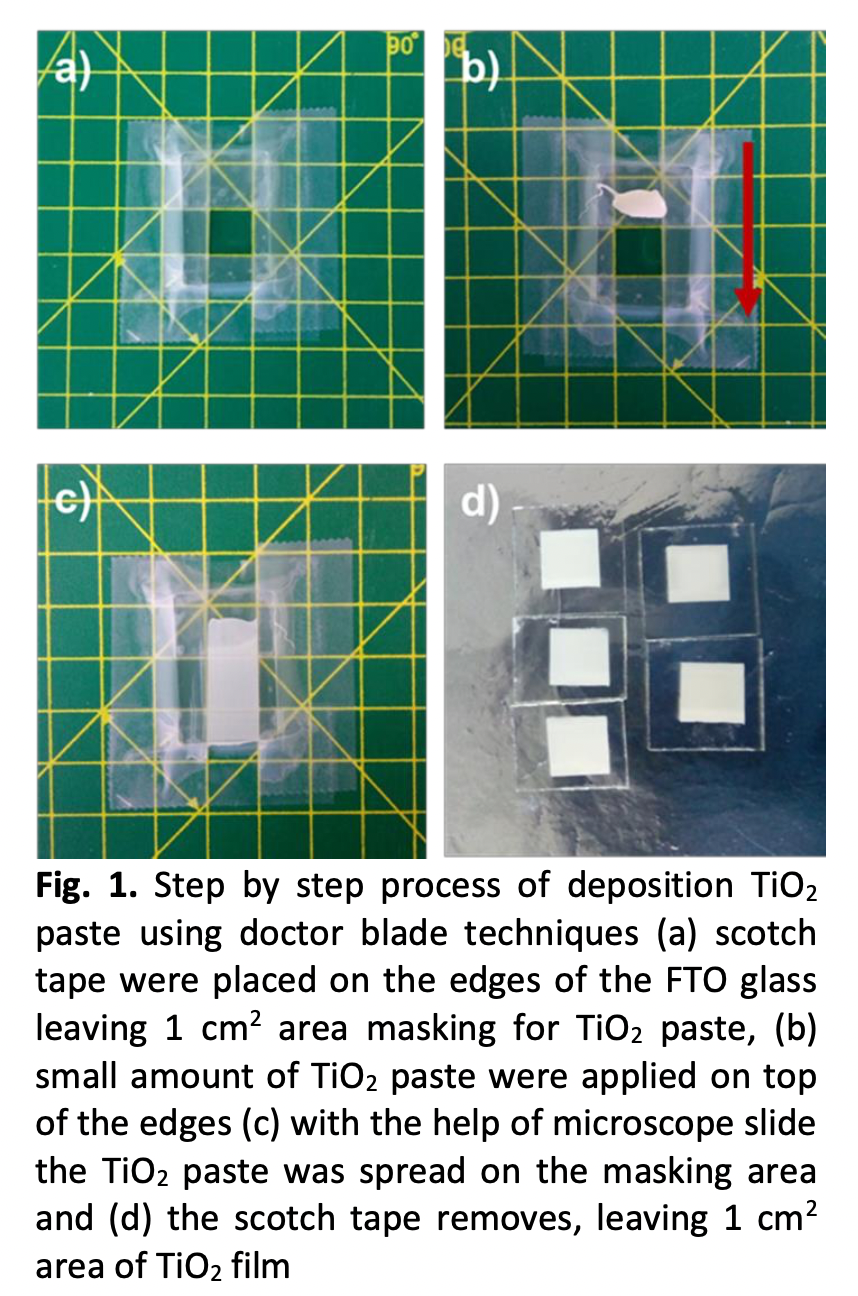Improving Dye-Sensitized Solar Cells Photocurrent Performance based on Titanium Dioxide Photoanode Thickness
DOI:
https://doi.org/10.37934/araset.34.1.177186Keywords:
Dye-sensitized solar cells, photoanode, titanium dioxide, efficiencyAbstract
The thickness of the photoanode film in dye-sensitized solar cells (DSSC) is a crucial parameter for optimum power conversion efficiency. The thick film can provide a high generation rate of a free electron, and at the same time, the charge recombination of electrons also increases. Therefore, there is competition between electron generation and charge recombination, which can cause the decreased performance of the DSSC. Meanwhile, the thinner film can reduce the charge recombination, but the dye loading on titanium dioxide (TiO2) will be low, which also can downgrade the DSSC performance. Therefore, optimised thickness from the current-voltage characteristic to understand the effect of thickness on efficiency and photocurrent generation. The result shows that the optimum thickness is 3 layers of scotch tape with short-circuit current density and efficiency of 10.96 mA/cm2 and 3.81 %.
Downloads





























